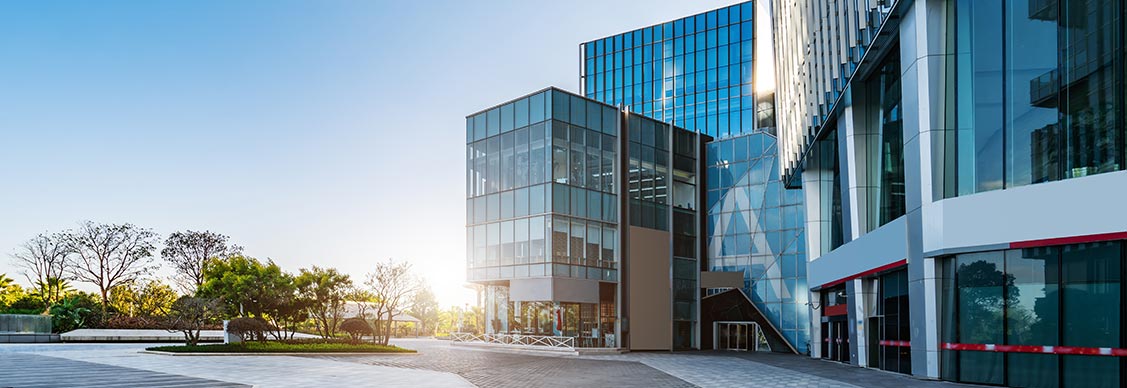Revitalising commercial real estate the high-ROI strategy of intelligent asset upgradation
Aditya Desai
In an era where 'location, location, location' is no longer the sole mantra for real estate success, forward-thinking investors and developers are turning their attention to a strategy that promises to breathe new life into aging assets: intelligent upgradation. This approach, encompassing retrofitting and strategic renovation, is rapidly becoming a strategic lever to manage commercial real estate obsolescence, offering a trifecta of benefits - lower vacancies, higher rentals, and enhanced sustainability.
The urgency of asset upgradation is underscored by JLL's recent market analysis, which reveals that nearly 60% of commercial buildings in India's top cities are over 15 years old. These aging structures, while often in prime locations, risk falling behind in a market where tenants increasingly demand state-of-the-art facilities, energy efficiency, and spaces that foster productivity and well-being.
The financial imperative for upgradation is compelling. JLL research indicates that strategically renovated assets in prime locations can command rental premiums of up to 20-30% over their unrenovated counterparts. Moreover, these revitalised properties experience significantly lower vacancy rates, with occupancy levels often surging by 15-20% post-renovation.
But the benefits of intelligent asset upgradation extend far beyond immediate financial gains. In an era where Environmental, Social, and Governance (ESG) considerations are paramount, upgrading existing structures emerges as a sustainability powerhouse. JLL's sustainability experts estimate that comprehensive retrofitting can reduce a building's energy consumption by 30-50%, dramatically shrinking its carbon footprint.
The key to successful asset upgradation lies in a holistic approach that goes beyond cosmetic improvements.
Core elements of an intelligent upgradation strategy
Technology integration: Smart building technologies are no longer a luxury but a necessity. IoT-enabled systems for energy management, predictive maintenance, and space utilisation not only enhance operational efficiency but also provide valuable data insights for future improvements.
Sustainability overhaul: From energy-efficient HVAC systems to water conservation measures and renewable energy integration, sustainability upgrades can significantly reduce operational costs while appealing to environmentally conscious tenants.
Flexible space design: The workplace of today demands adaptable spaces. Modular designs that can easily transition between individual and collaborative work areas are highly sought after by modern tenants.
Wellness features: With employee well-being at the forefront of corporate concerns, features like enhanced air filtration, biophilic design elements, and spaces for relaxation and exercise have become key differentiators. In addition, spaces designed to foster inclusivity, social harmony and provide a life beyond work, have become a key requirement of the new-age tenants.
Connectivity infrastructure: As 5G becomes the norm, buildings with robust digital infrastructure will have a significant competitive edge. Upgrading to support high-speed, reliable, and secure connectivity is crucial.
Aesthetic revitalisation: While functionality is key, the aesthetic appeal shouldn't be overlooked. Modern, inviting designs can transform the perception of an older building, attracting premium tenants and enhancing its market position.
The financial model for asset upgradation is equally compelling. JLL's financial analysts have found that well-planned upgradation projects can yield ROIs of 15-20% over a 5-year period, significantly outperforming many ground-up developments in terms of risk-adjusted returns.
However, successful asset upgradation is not without its challenges. It requires a delicate balance between improvement costs and potential returns, often necessitating phased implementation to minimise disruption to existing tenants. Moreover, navigating local building codes, compliance to the ever-evolving building laws and sustainability certifications can be complex, especially when dealing with older structures.
This is where expert guidance becomes invaluable. JLL's integrated approach to asset upgradation combines market intelligence, technical expertise, strategic planning and robust delivery mechanism to create tailored solutions that maximise returns while minimising risks.
As we look to the future, the importance of asset upgradation in commercial real estate cannot be overstated. With urban land becoming increasingly scarce and sustainability concerns mounting, the ability to breathe new life into existing assets will be a key differentiator for successful investors and developers.
